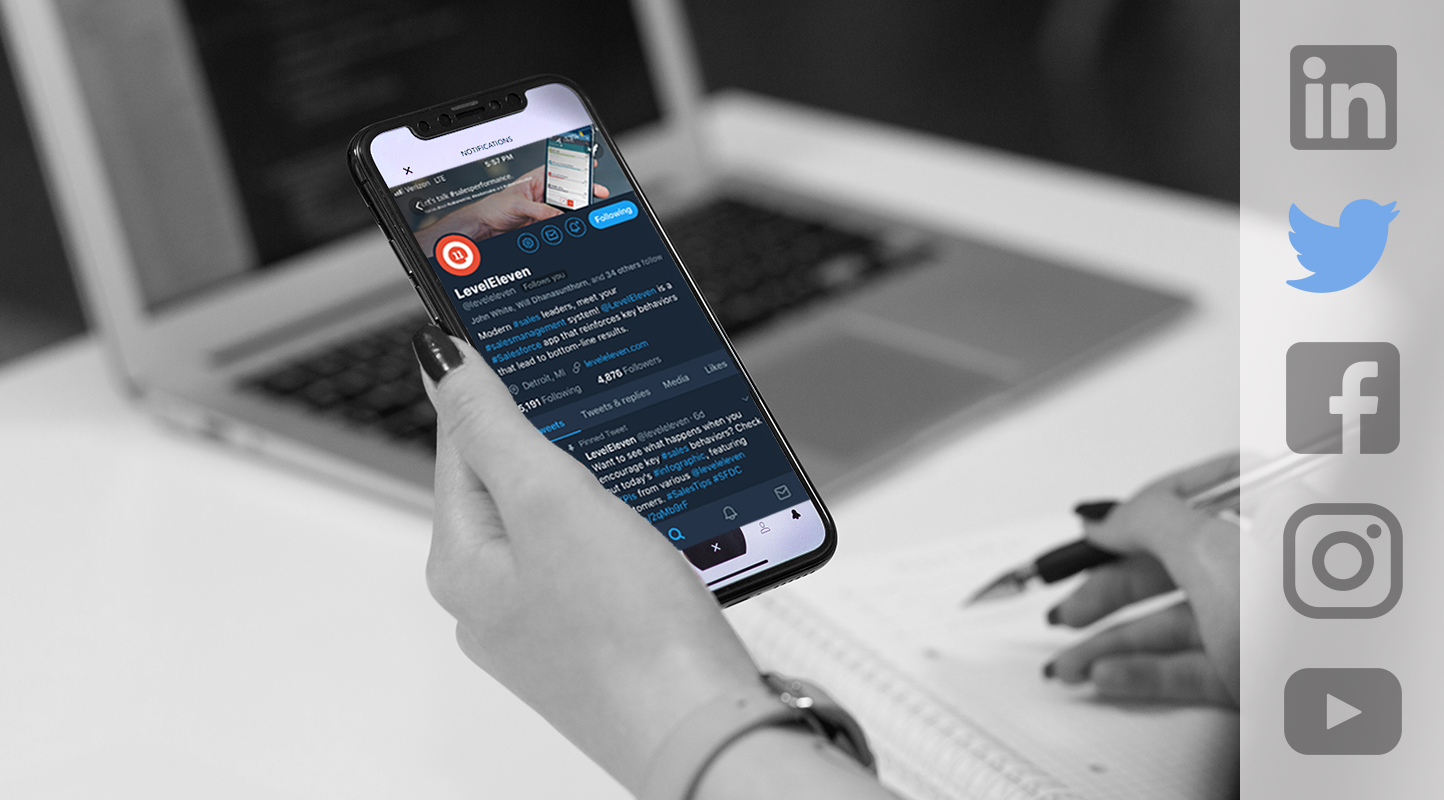 This article is the second installment in The Sales Person’s Guide to Social Media blog series. Check back for new articles covering other social platforms.
This article is the second installment in The Sales Person’s Guide to Social Media blog series. Check back for new articles covering other social platforms.
Modern sales professionals understand that social media is an integral sales tool, and with approximately 330 million monthly active users (MAUs), Twitter has become a haven for prospecting and social selling. But, to optimize your efforts on this fast-paced social network, you must first understand the best practices for success. [1]
Optimize Your Profile & Handle
Best Practices:
▪ Choose a unique and memorable handle
▪ Include relevant hashtags in your description
▪ Use optimal sizes for profile (400 x 400) and header photos (1,500 x 500) [2]
▪ Make your website and contact info visible
First and foremost, if you want to develop a strong presence that attracts prospects and helps them remember you, you need to have a memorable Twitter handle (username). But, with over a billion people signed up for Twitter, coming up with a creative handle can be tricky, so be sure to dedicate a small window of time to brainstorming 3 to 4 ideas, then research them to make sure they aren’t already taken. Once your list is complete, optimize your profile by adding a personalized message to your 160-character bio with relevant industry hashtags. Last but not least, select and upload high-quality images that paint a picture of you, your business and the value you represent. For an assortment of free high-resolution stock images visit unsplash.com.
Share Quality Content Daily
Best Practices:
▪ Tweet regularly during the work week (1 to 3 times per day when possible)
▪ Share a healthy combination of content (e.g., educational, promotional)
▪ Use optimal sizing for post images (1024 x 512) [2]
▪ Use optimal character count (71 to 100 Characters) [3]
Quality content progresses sales, with 74% of buyers gravitating towards salespeople who provide valuable info during the sales process. So, don’t post to post; be sure to adhere to the best character counts and image dimensions (above). That said, it’s also important to post regularly to keep your followers engaged, refine your voice and monitor success. To strike a balance between quality and frequency, identify pre-existing content your company has produced, add a short personalized message to make it relatable and sprinkle it into your weekly posts. As a rule of thumb, try to only use repurposed content once for every three posts you share. Also, try to post a healthy balance of thought leadership content, success stories with your product and educational material.
Fine-tune Your Hashtag Strategy
Best Practices:
▪ Share popular & relevant hashtags
▪ Use hashtag research tools (e.g., Hashtagify)
▪ Search for relevant content using hashtags
▪ Use hashtags in sentences where possible
Twitter is to LinkedIn what happy hour is to a business conference – far less formal. That’s due in large part to the prevalence of hashtag usage on Twitter. That said, hashtags should be a central part of your overall Twitter strategy. Hashtags make your content more visible to people with interests in what you’re sharing. For example, if you share a message revolved around a Salesforce app, like LevelEleven, the hashtag “#SalesforceOhana” is popular among Salesforce users who are likely to take an interest in such a product. This strategy applies to pretty much every public-facing content you have on Twitter, including your profile description, posts, comments and retweets.
Send Messages Selectively
Best Practices:
▪ Nurture the lead, don’t try to close
▪ Attach helpful media files to add value
▪ Follow Twitter’s messaging guidelines
Just like with dating, there’s a fine line between wooing your prospects and coming off too strong with Twitter messages. Twitter messages should be used to provide valuable and relevant content to your followers – not closing deals. As such, before sending a message, you should know a good deal about your lead, their interests, industry and pain points. Then, with that information in hand, you should identify what piece of content you have access to that provides an answer to their needs. Once you have a clear-cut strategy, curate a professional, personable and concise message. Also, try to avoid using excessive corporate jargon, as Twitter is casual and your verbiage should reflect that look and feel.
Retweet, Comment & Follow Strategically
Best Practices:
▪ Follow industry leaders, leads and prospects
▪ Retweet content relevant to your audience
▪ Share your company’s content
▪ Keep comments positive and complimentary
Outside of your content sharing strategy, how you engage with others on Twitter can have a significant impact on your social success. First, follow accounts of people and brands in your industry to give your content more reach and improve the likelihood of retweets, comments and likes on your posts. For retweets, you want to keep them relevant, like your posts, to provide your target audience with real value they’ll remember. With comments, try to tag partners and coworkers whenever applicable, as it brings new voices into the conversation and broadens your comments’ social reach. Also, be sure to keep comments positive and tasteful, as coming off as a “Twitter troll” is bad for business. Lastly, in regards to likes, just remember that every like is publicly visible, so don’t like anything you aren’t comfortable sharing with a prospect.
Want to learn to master other social media networks? Click the button below to read our guide on the best practices for LinkedIn!
References
■ [1] https://blog.hootsuite.com/twitter-statistics/
■ [2] https://sproutsocial.com/insights/social-media-image-sizes-guide/#twitter
■ [3] https://sproutsocial.com/insights/social-media-character-counter/#twitter




